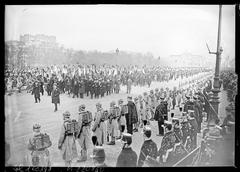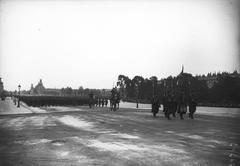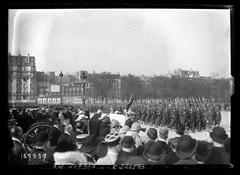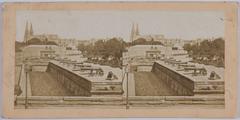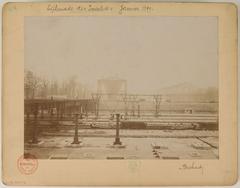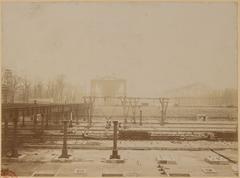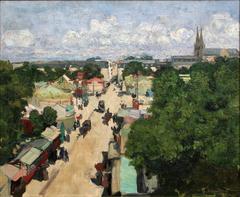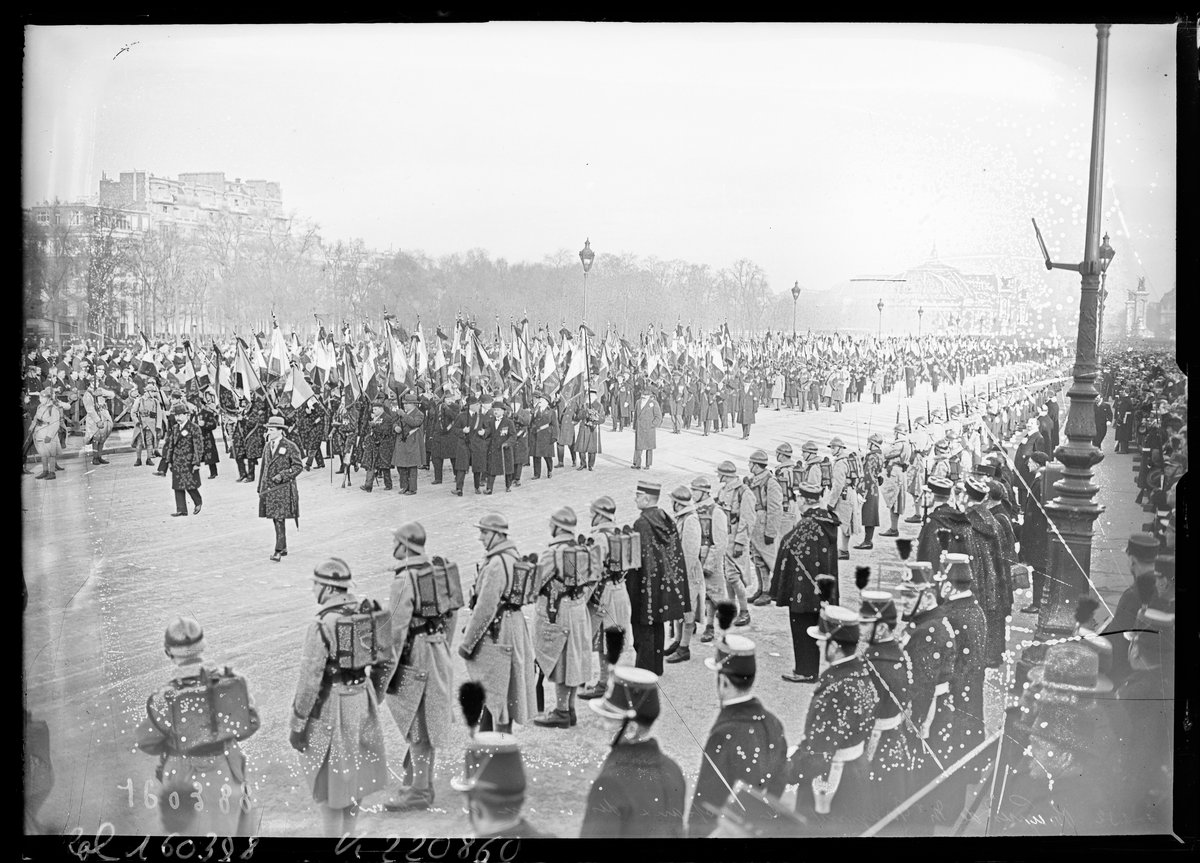
Visiting Avenue du Maréchal Gallieni in Paris: History, Tips, and Attractions
Date: 18/07/2024
Introduction
Table of Contents
- [Historical Significance and Hidden Gems](#historical-significance-and-hidden-gemshistorical-significance-and-hidden-gems)
- [A Legacy of Transformation](#a-legacy-of-transformationa-legacy-of-transformation)
- [From Rural Outskirts to Urban Hub](#from-rural-outskirts-to-urban-hubfrom-rural-outskirts-to-urban-hub)
- [A Showcase of Architectural Evolution](#a-showcase-of-architectural-evolutiona-showcase-of-architectural-evolution)
- [The Rise of Modernity](#the-rise-of-modernitythe-rise-of-modernity)
- [Visitor Information](#visitor-informationvisitor-information)
- [Nearby Attractions and Travel Tips](#nearby-attractions-and-travel-tipsnearby-attractions-and-travel-tips)
- [A Microcosm of Parisian Life](#a-microcosm-of-parisian-lifea-microcosm-of-parisian-life)
- [Visiting Hours, Tickets, and Historical Landmarks](#visiting-hours-tickets-and-historical-landmarksvisiting-hours-tickets-and-historical-landmarks)
- [Residential Splendor](#residential-splendorresidential-splendor)
- [Église Saint-Louis de Vincennes](#église-saint-louis-de-vincenneséglise-saint-louis-de-vincennes)
- [Parc du Château de Vincennes](#parc-du-château-de-vincennesparc-du-château-de-vincennes)
- [Exploring Vincennes](#exploring-vincennesexploring-vincennes)
- [Visitor Tips](#visitor-tipsvisitor-tips)
- [Socio-Economic Impact](#socio-economic-impactsocio-economic-impact)
- [Local Economy and Employment](#local-economy-and-employmentlocal-economy-and-employment)
- [Transportation and Connectivity](#transportation-and-connectivitytransportation-and-connectivity)
- [Quality of Life and Social Dynamics](#quality-of-life-and-social-dynamicsquality-of-life-and-social-dynamics)
- [Future Developments](#future-developmentsfuture-developments)
- [Visitor Information](#visitor-informationvisitor-information-2)
- [FAQs](#faqsfaqs)
- [Conclusion](#conclusionconclusion)
- [References](#referencesreferences)
Historical Significance and Hidden Gems
Avenue du Maréchal Gallieni, while not as universally renowned as the Champs-Élysées or as steeped in ancient history as the Latin Quarter, boasts a unique historical significance intricately woven with the evolution of the French capital. This avenue offers visitors a fascinating journey through Parisian history, architectural marvels, and modern attractions.
A Legacy of Transformation
The avenue’s history reflects the broader transformation of Paris, particularly during the late 19th and early 20th centuries. Originally known as Avenue de la République, it was renamed in 1918 in honor of Marshal Joseph Simon Gallieni, a pivotal figure in World War I. Gallieni’s decisive role in the First Battle of the Marne, where he famously requisitioned Parisian taxis to transport troops to the front lines, earned him a place in French history and led to this prominent avenue bearing his name.
From Rural Outskirts to Urban Hub
Before its urbanization, the area where Avenue du Maréchal Gallieni now stands was part of the commune of Bagnolet, a village on the outskirts of Paris. The annexation of several surrounding communes in 1860, including Bagnolet, marked a turning point. This period saw Emperor Napoleon III’s ambitious urban renewal project under the guidance of Baron Haussmann, transforming Paris into the grand city it is today.
A Showcase of Architectural Evolution
The Haussmann era left its mark on Avenue du Maréchal Gallieni, with the avenue’s architecture reflecting the stylistic trends of the late 19th century. While the avenue doesn’t boast the same concentration of Haussmannian buildings as some central Parisian districts, the influence is evident in the remaining structures from that period. These buildings, with their characteristic balconies, ornate facades, and uniform height, offer a glimpse into the architectural vision of Haussmann’s Paris.
The Rise of Modernity
The late 19th and early 20th centuries saw Paris hosting several World Fairs, grand exhibitions showcasing technological advancements and cultural achievements from around the globe. Avenue du Maréchal Gallieni, with its proximity to the Bois de Vincennes, a vast park chosen as the site for several of these expositions, played a role in accommodating the influx of visitors and showcasing the city’s modernity.
The avenue’s connection to sporting history is cemented by its proximity to the Parc des Princes, home to the Paris Saint-Germain football club. Inaugurated in 1897, the stadium has witnessed countless sporting events, including the FIFA World Cup and UEFA European Championship, further contributing to the avenue’s dynamic character.
Visitor Information
For those planning a visit, Avenue du Maréchal Gallieni is accessible year-round. While the avenue itself does not require tickets or have specific visiting hours, nearby attractions such as the Parc des Princes and Bois de Vincennes may have specific opening times and ticket requirements. It is advisable to check the respective websites for the most up-to-date information.
Nearby Attractions and Travel Tips
In addition to its historical significance, Avenue du Maréchal Gallieni is well-positioned for exploring other nearby attractions. The Bois de Vincennes offers a serene escape with its lush greenery and lakes, while the bustling Porte de Bagnolet area provides a glimpse into the vibrant local life. For those interested in sports, catching a match at the Parc des Princes is a must. Public transportation options, including metro and bus services, make it easy to navigate the area.
A Microcosm of Parisian Life
Today, Avenue du Maréchal Gallieni represents a microcosm of Parisian life, a blend of residential and commercial spaces. While not as bustling as some of the city’s more central avenues, it offers a more local, authentic Parisian experience. The avenue is home to a diverse array of businesses, from traditional French bakeries and bistros to modern boutiques and international restaurants, reflecting the city’s evolving cultural landscape.
Visiting Hours, Tickets, and Historical Landmarks
Residential Splendor
The avenue is primarily residential, characterized by elegant buildings showcasing architectural trends from the early to mid-20th century.
Art Deco Apartments
Stroll along the avenue to admire the distinct geometric patterns, decorative motifs, and use of luxurious materials like marble and bronze that define the Art Deco style popular in the 1920s and 30s.
Post-War Architecture
The avenue also features buildings from the post-war period, reflecting the architectural shifts towards functionality and modernism. These structures, while less ornate, offer an interesting contrast and showcase the city’s architectural diversity.
Église Saint-Louis de Vincennes
One of the most prominent landmarks on Avenue du Maréchal Gallieni is the Église Saint-Louis de Vincennes.
Architectural Significance
This stunning church, consecrated in 1924, is a remarkable example of the Neo-Byzantine style. Its design, by architect Jacques Droz, draws inspiration from the Hagia Sophia in Istanbul, featuring a large central dome, intricate mosaics, and a grand, awe-inspiring interior.
Historical Context
The church stands as a testament to the architectural revivalism of the early 20th century, where architects sought inspiration from historical styles.
Parc du Château de Vincennes
Adjacent to Avenue du Maréchal Gallieni lies the expansive Parc du Château de Vincennes, a sprawling green space offering respite from the bustling city.
Historical Significance
The park surrounds the Château de Vincennes, a former royal residence dating back to the 12th century. The château itself is a fascinating blend of architectural styles, reflecting its long and storied history.
Recreational Opportunities
Today, the park serves as a popular destination for Parisians and tourists alike. Visitors can enjoy leisurely walks, bike rides, boat rides on the lake, or simply relax and soak up the tranquil atmosphere.
Exploring Vincennes
Avenue du Maréchal Gallieni’s location in Vincennes places it within easy reach of other notable attractions.
Vincennes Wood
Just beyond the park lies the Bois de Vincennes, one of the largest green spaces in Paris. This sprawling forest offers numerous walking trails, picnic areas, and a zoo.
Cartoucherie de Vincennes
History enthusiasts can delve into the past at the Cartoucherie de Vincennes, a former munitions factory transformed into a cultural center. Today, it houses several theaters and performance spaces.
Visitor Tips
Public Transportation
Avenue du Maréchal Gallieni is easily accessible by metro (line 1, Château de Vincennes station) and bus.
Combining Attractions
Plan your visit to include the nearby Château de Vincennes and Parc Floral de Paris for a comprehensive experience.
Local Cuisine
Explore the side streets off the avenue to discover charming cafes and restaurants offering authentic French cuisine.
Socio-Economic Impact
Avenue du Maréchal Gallieni, while not as centrally located as some of Paris’s more famous attractions, still plays a role in the city’s socio-economic landscape.
Local Economy and Employment
The avenue is home to a mix of businesses, including shops, restaurants, and services catering to both residents and visitors. This commercial activity generates employment and contributes to the local economy. The presence of the Rosny 2 shopping center, one of the largest in the Île-de-France region, significantly boosts this impact.
Transportation and Connectivity
The avenue serves as a significant transportation hub, connecting the suburbs to central Paris via the RER A line and various bus routes. This accessibility is crucial for residents commuting to work or accessing services in the city center.
Quality of Life and Social Dynamics
Avenue du Maréchal Gallieni offers a mix of housing options, attracting a diverse population. The presence of green spaces like the Bois de Vincennes nearby contributes to the quality of life for residents.
Future Developments
Ongoing and future urban renewal projects in the surrounding areas, such as those connected to the Grand Paris Express development, are likely to impact the avenue. These projects aim to improve infrastructure, housing, and public spaces, potentially attracting new residents and businesses.
FAQs
What is the history of Avenue du Maréchal Gallieni?
The avenue, originally known as Avenue de la République, was renamed in 1918 to honor Marshal Joseph Simon Gallieni, a key figure in World War I. It reflects Paris’s transformation during the late 19th and early 20th centuries.
How can I get to Avenue du Maréchal Gallieni?
The avenue is accessible via public transportation, including metro and bus services. It is located near the Porte de Bagnolet area.
Are there any guided tours available?
While there are no specific guided tours for Avenue du Maréchal Gallieni, several tours cover the historical and architectural significance of the surrounding areas.
What are the nearby attractions?
Nearby attractions include the Bois de Vincennes, Parc des Princes, and the bustling Porte de Bagnolet area.
